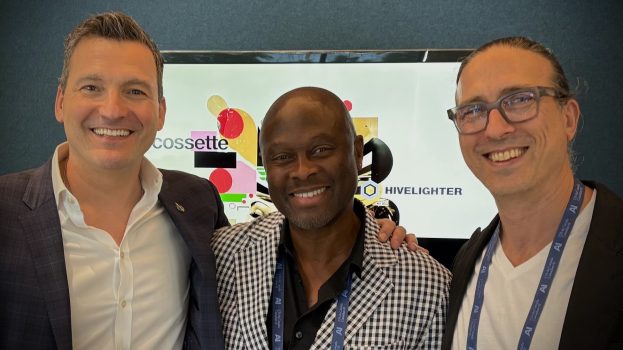Toronto-based wearable co. Kiwi is set to hit the market in July, 2014 and is a programmer’s dream.
The clip-on device differs from some of its wearable cousins (which seem to favour the bracelet or head-gear aesthetic) by being a more inconspicuous item that can be worn anywhere on the body. And while other devices rely on muscle movement to work, the Kiwi, priced at $125, is equipped with a barometer, spacial and sound sensor, meaning it will be able to measure everything from movement, temperature and voice commands.
It’s currently in its developer stage, shipping off to various programmers to create an app ecosystem so when it reaches consumers, there will already be a pre-programmed set of functionalities (for example, when I tap the device in the home, it turns off the lights. Or, it sends a message to my phone when I haven’t moved from my seat in more than an hour. It could also respond to voice commands.)
It’s currently equipped with a single function: do – when. When you do something to the device, it sends out a signal to do something else. And that makes it the programmer’s dream and keeps it – in its current incarnation – a bit out of reach of the regular consumer.
Ashley Beattie, CMO of Kiwi, hopes to address this issue in time for the brand’s summer release.
The open-source developer community and early adopters will help them determine which apps are most popular and functional over the coming months, with the company focusing its weight and resources behind those.
It is also completely open to any and all branding partnerships, Beattie says, not willing to put limitations on his device – though to date, the most interest from outside companies they’ve received has been in the educational space.
That being said, it could be a great tool for marketers from a market-research perspective, he says. Since market research doesn’t often get to see people within their own homes, the device could be programmed to monitor a group of people around a preset-task. For example, if a toothbrush brand wanted to know more about the brushing habits of consumers, it could program the device to monitor peoples’ pre-bed rituals to learn when and for how long people brush their teeth, without needing someone to actually monitor the activity.
In preparation for the launch, however, a lot of the brand’s focus has been getting the device ready for consumers – who are still in the education-phase of the wearable technology. PR will drive the brand’s marketing strategy, as will trial programs.
Kiwi has been chatting with retailers and distribution companies, Beattie says, though at press time nothing has been confirmed.
“I’m hoping we’ll find ourselves in Best Buys or that people can get a hands-on view of it,” he says.
[iframe_youtube video=”qAlS5iqDgLo”]
























